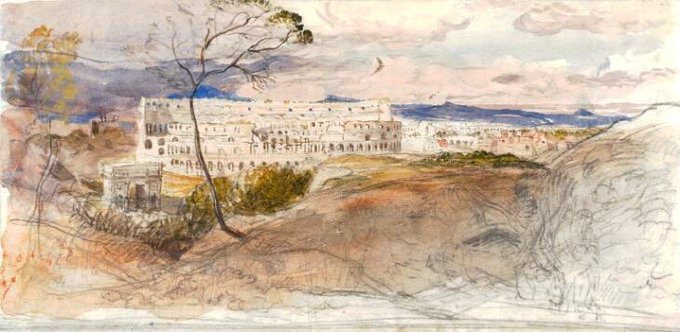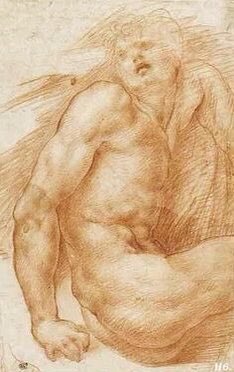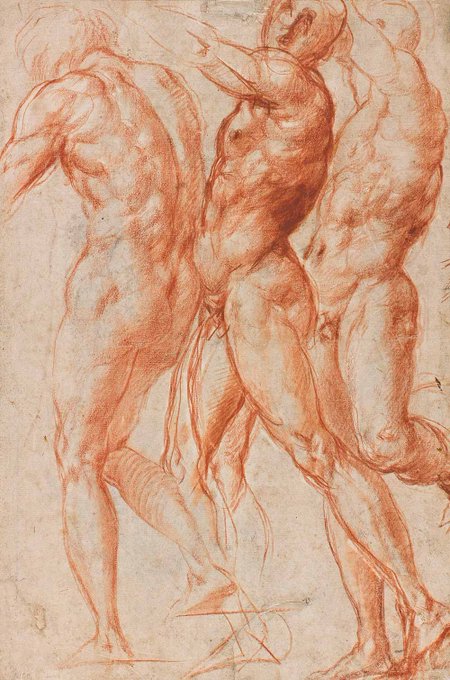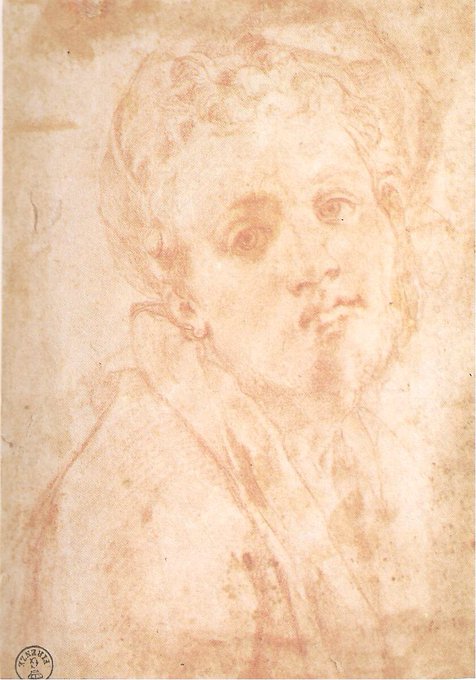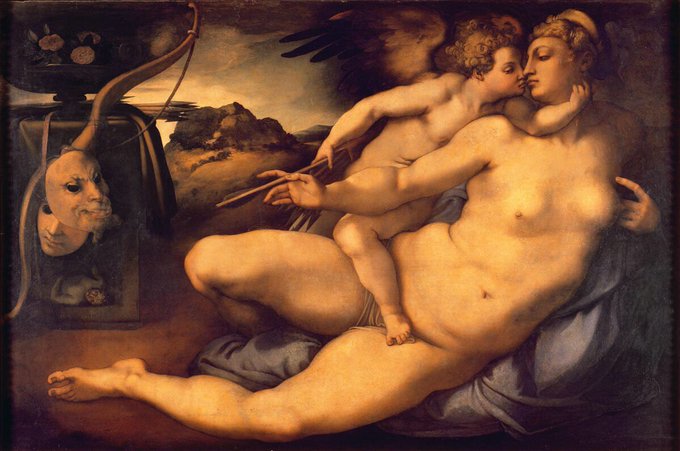Palmer visited Italy for two years (1837) The Colloseum, Rome (1837-9), Italian Hill Town (c1838) & Cypresses of the Villa d’Este (1838). I particularly love his intense study of Cypresses. In the 19th C Cypresses were popular with aesthetes
He travelled to Wales & Devon. The Waterfalls, Pistil Mawddach, N Wales (1835-6), Llywyngwynedd & Part of Llyn-y-ddina (1835), N Coast of Devon with Lundy Island (c1835) & Harlech Castle (c1830-60s). He was continuing the tradition of artists exploring Burke’s sublime & beautiful
Many of the drawings were used as cartoons for finished paintings. These were drawings which were worked up to scale, the lines pricked & then charcoal blown through the holes to leave an outline on the canvas or fresco. His drawings are as important as his paintings.
He described the male body in a very particular way with elongated torso, arms & legs. His technique created sensual images of the male nude.
Pontormo drew many nude studies from life. His understanding of the Male form was impressive with an ability to create emotion & explore elegant poses.
One of Pontormo’s greatest legacies is his beautiful body of drawings, especially of the nude. These ranged from ideas that he jotted down to preliminary drawings for his paintings.
Pontormo’s most important pupil was Bronzino. The latter inherited his love of elegant lines & idiosyncrasy from his master. Noli Me Tangere (1530s), Martyrdom of St Maurice (1531) & Venus & Cupid (1533). The latter is based on a Michelangelo prototype too.
In order to study the work of Michelangelo he visited Rome. This trip influenced his later mature style. Madonna & Child (1528), St Matthew (1528), The Visitation (1528-9) & Madonna & Child (1529)
Mannerism came after the High Renaissance. It sought to depict characters in emotional & dramatic form. Figures lengthen to become graceful & swan-like necks elongate in a hallucinatory style. Pontormo was one of its great masters. Madonna & Saints (1518) & Holy Family (1518)


